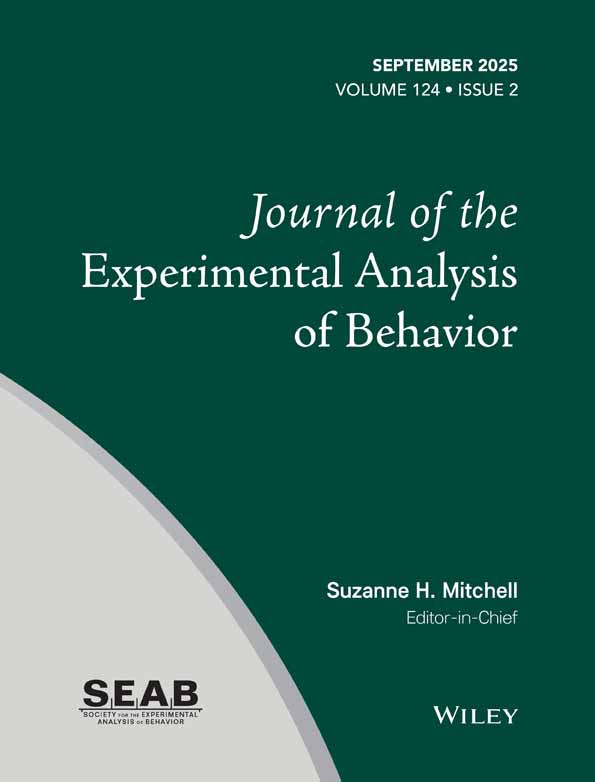INHIBITORY CONTROL AND ERRORLESS DISCRIMINATION LEARNING1
This research was supported mainly by National Institute of Mental Health Grant MH 19300. We thank Dexter Gormley for valuable advice. Dr. H. S. Terrace generously supplied unpublished information concerning his prior experiments, which guided our selection of specific procedural details and our criteria for labelling birds “errorless”. He also made valuable comments on a draft of the present manuscript.
Abstract
Pigeons learned to discriminate between a positive stimulus (white key) and a negative stimulus (red or green key, depending on the subject) via Terrace's fading procedure. Generalization tests, conducted with intermittent reinforcement for key pecking at various wavelengths, yielded minima at the value of the negative stimulus in most “errorless” birds. Terrace's contrary finding of flat gradients in errorless subjects probably resulted from a floor-effect (i.e., virtually zero responding) produced by his extinction-test procedure. The present and other findings do not support Terrace's conclusions that the negative stimulus of an errorless discrimination is behaviorally neutral; inhibition apparently develops to the nonreinforced stimulus even during errorless discrimination learning. A negative correlation between stimulus and reinforcer seems the crucial factor in producing an inhibitory stimulus.




